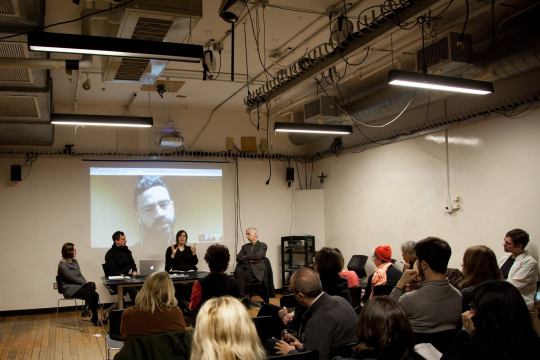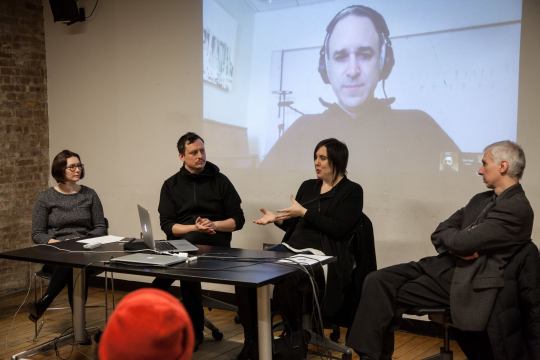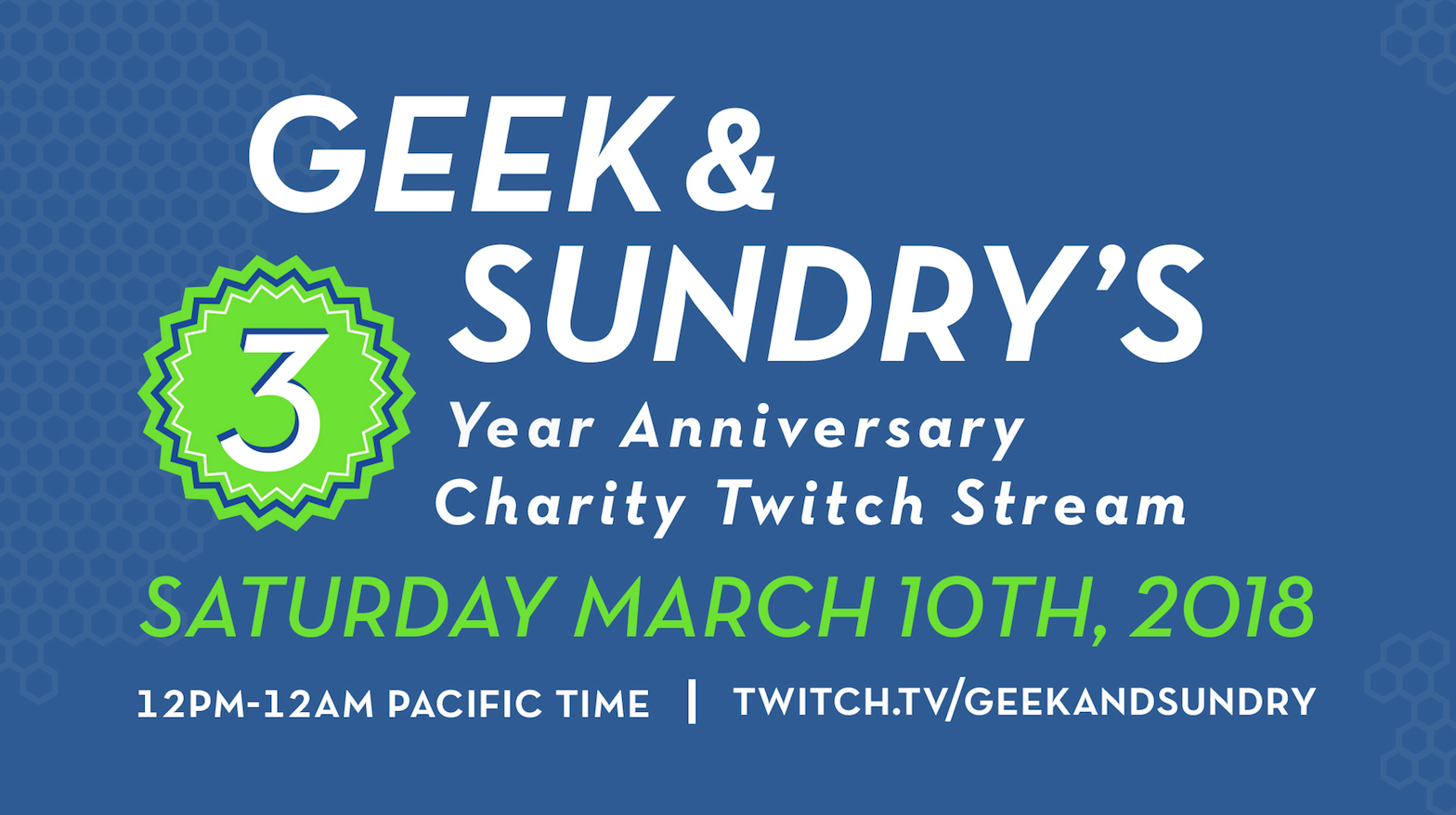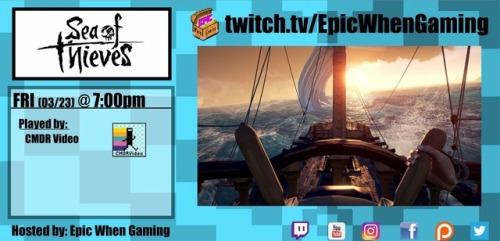#live stream
TAVRN Says ACAB | Session 42
Now that they’ve learned about the Elzehemnian Echoes, TAVRN has to decide what their next move will be.
An Illusory Homecoming | D20 Error | Session 39
After getting Augie back to the Material Plane, TAVRN continues their journey to Owynn.
The Problem with Periscope
YouTuber and filmmaker Casey Neistat is a prolific user of social media. He uses YouTube, of course, as well as Facebook, Twitter, Snapchat, Instagram, and even an app of his own creation: Beme. But he does not use Periscope. Why? He quite often makes that point that life is inherently boring, and thus, livestreaming it, unedited and unfiltered, makes for tedious content.
That’s just one of many problems with Periscope, the livestreaming app Twitter bought and launched in March 2015 before the original creators and founders released the app themselves.
The launch was quite messy and felt fairly rushed
- Another livestreaming smartphone app, Meerkat, beat them to it, making its debut at film, media, and tech convention South by Southwest 2015 just a couple of weeks earlier near the beginning of March
- Twitter actually cut off Meerkat from its social graph just as South by Southwest started, which didn’t really give people the favourable feels
- A few months down the line, Meerkat also beat Periscope to Android
- Twitter’s severed ties with Meerkat only helped propel the rival app into a stronger limelight. I’d go as far to say that Meerkat actually had a brief cult/celebrity moment. The Verge summarised this well »
That’s all in the past, though. I’ve heard hundreds of people talking about Periscope since it launched, but mentions of Meerkat have been nigh-on non-existent. Periscope have won, and I use ‘won’ very loosely, this battle. Let’s skip forward to the present, and start with the most alarming issues within the Periscope community before drilling down the app’s broken core.
Paedophilia and sexually abusive comments
Remember Omegle? A webcam chat service which connects you with another random user. It quickly became a cesspool of men flashing their penises, resulting in the number of female users shrinking to a bare minimum. Periscope is the opposite, in a way: most streams are by females, and most comments are from males.
The comments are usually deeply concerning:
- Tens or hundreds of guys incessantly commenting on the stream of one girl pressuring her to take her clothes off or expose herself
- This pressure frequently turns into demand, with language becoming violent and threatening
- This makes the streamer understandably nervous, tainting the quality of the stream as they get distracted by being targeted and find it impossible to have a decent conversation with genuinely interested viewers
- Males proceed in describing how they’re masturbating while watching the female’s stream
- Females often end streams abruptly, looking disgusted, hurt, and confused
For the past couple of weeks I’ve spent an hour each evening perusing Periscope’s global list and trying to talk to people. On two occasions, I’ve landed on streams from girls aged under 18. And on both of those occasions, a regular pattern emerged: commenters would write disgusting perverse things, someone would ask the girl their age, they’d say 15 (the first) or 16 (the second), but the demands for nudity would just keep on coming.
This is both illegal and disturbing behaviour. Periscope has a system in place for reporting this sort of behaviour though, right?
There’s no way to report this sort of behaviour
Nope.
- You can report broadcasts, but they’re rarely concerning. In fact, I’ve only seen one penis so far. The comments are almost always abusive, though.
- You can’t report comments. Not in your own stream or in other people’s streams. You can only block people.
- Periscope’sown guidelines say this: “If you see a user posting abusive comments in a broadcast, please take a screenshot and email [email protected]. We will take action if we find that the user violates the Periscope Community Guidelines.” This is not good enough. To properly quell hateful comments on a livestreaming service, there needs to be a team of people constantly monitoring certain abusive keywords.
For a moment, let’s imagine we’ve skipped forward two years and Periscope has implemented a suitable framework for reporting abusive comments or built a system intelligent enough to detect abusive comments. Let’s focus on…
The actual content of streams
- Three quarters of Periscope streams are people sat in their bedrooms talking to their front-facing camera. Watching these streams is a lot like being on the receiving end of awkward date small talk: it’s just not fun.
- Only, it’s worse than awkward date small talk, because streams regularly buffer every 30 seconds, and there are frequently 10-second delays between comments being sent and comments appearing on the streamer’s screen. This makes communication disjointed and turns something which could perhaps be fun into a chore.
- Sidenote: ‘Trying to reconnect…’ doesn’t feel like good copy design. Is it trying to reconnect, or is it reconnecting?
- People driving. Very soon we’ll hear of the first fatal car crash caused by people Periscoping while behind the wheel.
- If you’re lucky, you’ll open Periscope while someone is livestreaming an interesting event, like conferences or concerts. Obvious copyright issues aside, these streams only ever seem genuinely interesting for a few minutes. Events livestreamed from a smartphone fall into a monotonous grey area between experiencing live events for yourself in person and seeing photos/reading write-ups of events on news sites and blogs. Live broadcasts (e.g. televised sports) need a lot of work — multi-angles, replays, graphics, etc. — to be engaging.
Finding interesting content or people
When you open Periscope you’re presented with a feed of live broadcasts or archived replayable broadcasts from the people you follow. The second main screen is a global view — a list of randomly-selected streams from people around the world. More recently, Periscope introduced a map view for this worldwide feed. Let’s talk about both the list and the map view:
- At the top of the list view, there are usually three featured streams — the only attempt Periscope makes at pushing interesting content to the forefront. These are, most of the time, news anchors giving behind-the-scenes studio tours, which is interesting at first but quickly gets repetitive and bland.
- I haven’t the faintest of clues how the rest of the list view is selected from a technical perspective, but for all intents and purposes to the user, it’s entirely random. This would be a good thing if streams were typically engaging or interesting, but as explained above, they’re almost always not.
- LANGUAGE. One of the options in Periscope’s Settings panel is the ability to filter the list view down to only the languages you know. In my case, this is English and German. Do I see only English and German streams? No, I don’t. I see streams in every language. French, Dutch, Turkish, Chinese, Japanese, Russian — everything. What is the point of this option? What is the point of showing me streams in languages I don’t understand? I can’t listen. Or converse. The filter doesn’t work.
- HASHTAGS. It’s just about forgivable that the original developers didn’t implement a hashtag system to make it easier to search for content you might be interested in, but it’s the eighth deadly sin that Twitter, the pioneers of the hashtag, still haven’t developed this feature more than half a year after launching the app. Amusingly, users still include hashtags in the titles of their streams — entirely non-functional, and makes the list view look messy.
- CATEGORIES. Nope.
- RECOMMENDED PEOPLE. Nope.
- When you go to the third main screen of Periscope, the place where you find new people to follow, you’re presented with a couple of Featured Users and then a long list of everyone you follow on Twitter who has Periscope. Not people you follow on Twitter who actively use it — just people who have accounts. In alphabetical order.
- This screen doesn’t appear to be intelligent or tailored in any way. The Featured Users seem entirely random — I was recommended two Food Network accounts, and I don’t follow either on Twitter. Nor do I follow any foodies/chefs/restaurant brands on Periscope.
- People you follow on Twitter who actively use Periscope aren’t given priority over everyone else. As said, it’s just alphabetical.
- As for the map view, it’s not clear how the pins shown are selected. Instead of being able to zoom in on a place you’re interested in and see the streams from that location, you’re presented with a random array of dots across the world. Opening a live stream of a random place would actually be quite a nice idea if the livestreams were interesting, but alas, you end up staring at a bored teenager lying in bed 90% of the time.
It’s pretty impossible to purposefully find interesting content on Periscope. It’s like the lottery, but instead of hoping to win loads of money, you search in vain of some useful or intriguing content to watch.
Hearts
Comments are how watchers interact with streamers, so they have to appear somewhere. Annoyingly, they appear over the bottom third of the livestream, getting in the way of what you’re trying to watch. That’s okay, though, because where else are you going to put them?
Hearts aren’t necessary at all, though. They bounce and flow up the right edge of the screen, cutting out more of the livestream you’re trying to watch, and they don’t contribute to how the app is used. You can’t see a list of streams you’ve hearted, and you can’t see who has hearted your streams. Hearts just accumulate into an overall number which sits on people’s profiles.
If it’s a way for Periscope to figure out which content people are enjoying so that they can push certain livestreams to the forefront, fair enough. But that’s still a very one-dimensional way to measure interest and choose content to show users when they land in the app.
In summary
Periscope has a long way to go. Given that Jack Dorsey has just taken up the helm at Twitter and has already proven ruthless in the staff layoffs he’s actioned, hopefully for the benefit and interest of the ailing social network, it will be very interesting to see how he approaches Periscope, which, from the outside, looks much more like a burden than a blessing.
The team behind the app first need to address the legal issues Periscope presents: bullying, sexual abuse, paedophilia, and copyright. Then they need to throw lots of weight behind making it easier to find good content.
They also need to work with content creators from other platforms to give them an incentive to use Periscope. At the moment there’s no real clear reason for YouTubers, brands, businesses, et al to livestream through the app. Their audience isn’t there. Celebrities I’ve seen venture into Periscope territory have used the app once and then given up, never to return.
And with the first rumblings of Facebook’s own integrated livestreaming platform making the headlines, the clock is ticking if Periscope want to be the app where the revolution is livestreamed instead of the ultimate problematic fave.
Post link
I’m streaming my gameplay for the first time! Elder Scrolls Online for now because I’m using my Mac, PC isn’t set up yet. Might do some Sims gameplay too.

The Madame Tussuads Selena wax figure unveiling will be live streamed on Selena’s official Facebook page! So for those of you who couldn’t make it out there to Hollywood here’s your chance to be apart of it virtually. Let’s make Selena trend with the hashtag #SelenaQuintanilla she deserves this!

“Now, more than ever, we need to get together to explore ways in which the live media can be used to foster action, creativity, and inclusivity!” - REFEST 2.0 / Presented by ITP, CultureHub, and WITNESS at ITP/NYU - 721 Broadway 4th Floor
The State of Telematic Art in 2017 - A Panel Discussion (Billy Clark, Michael Dessen, Daniel Pinheiro, Jesse Ricke, Robert Rowe, Kate Sicchio, & Sarah Weaver)

Check out photos of Refest 2.0 here!
Some thoughts on The State of Telematic Art:
From the early experiments on satellite connections to allow the bringing together of distant remote locations into one same (shared) space until nowadays seamless use of online tools that almost invisibly bring together users from any location into the same room, Telematic Art has been exploring the way technology – and more specifically networked environments – shapes human interaction.
The possibility of dissipating time and distance in projects from artists like Kit Galloway, Paul Sermon or in the thoughts of Roy Ascott has been a major concern towards the development of ‘structures’ that often reflect upon the human impossibility of ubiquity.
In projects like LAND PROJECT or, within that one, the more recent, in collaboration with Annie Abrahams, Distant Feeling(s) the main goal is to deconstruct the sense of co-presence in the same time and space and traduce it / materialize it into actions that are (possible) models of re-thinking our agency in a networked society and within the digital sphere.
Either by experimenting ‘moving’ together with someone that is not in the same space as you, but that becomes present through mediation or trying to perceive the presence of ‘others’ in the network by creating a moment of silence and stillness where we’re left alone in front of our computers but as a group, the art object becomes complete in the intersection space; often the output (the format in which the result is shown) – the same surface used for the process of mediation to happen.
Although networked practices find at its core, with the developments made over the last decade on having the tools more accessible to the practitioners, the possibility of building connections between artistic communities and bringing them together in a more sustainable way providing a medium that beyond allowing connection facilitate collaboration, these practices deal with characteristics of the environment in which they happen and elaborate on ways to approach them and shape the methologies of artistic production. The perception of synchronicity in projects like the one’s of Sarah Weaver is one of the many aspects included in the way our body and brain perceive this context which is a specific space for which a specific type of art is being developed.
Thinking about the space where Telematic Art happens is to re-think a space/place and developing tools that widen the potential of the practices related to it. Either it is by connecting human-to-human through the machines, input external live data that disrupts the ‘normal’ (organic) way of moving and/or behaving or, as an example, investigate latency as part of music composing where sounds travel across distant locations and how all of this is (also) a consequence of living in the digital age, transforms telematics into a process of thinking the world we live, acknowledging that we are not constricted to our own contexts but that we can (more easily) reach out and build significant discourses about possible futures – an extension of what we are now.
To be thinking and practicing Telematic Art was and it is about reformulating the present by overcoming (and troubleshooting) impossibilities allowing our perception about the world to change.
Youngblood reiterates the ethical responsibility of artists to utilize telecommunications in a socially constructive manner, but is skeptical of how early telematic artworks merely repeated what had become common commercial practices. “A communications revolution is not about technology; it’s about possible relations among people,” he observes, arguing that this revolution has the potential to invert extant social relations, transforming the centralized, hierarchical structure of geographically discrete nations into one of decentralized, but politically significant, communities defined by “consciousness, ideology and desire.” (…) the artistic use of telecommunications is “special” (i.e., art as opposed to nonart) only if the media are employed in a way that is not “done every day in business and industry,” and therefore “given, obvious, routine, … [and] politicized.”-‘Roy Ascott, Telematic Embrace - Visionary Theories of Art, Technology, and Consciousness’

The results of my latest twitch stream and the first of my watercolor series focusing on Mustelidae. Here we have the honey badger (Mellivoracapensis) and American badger (Taxideataxus).
Rydel’s Outfit for the R5 All Day All Night Stream;
- Faux Stone Longline Necklace (Exact) - Price: $4.90
- Striped Off-the-Shoulder Jumpsuit (Exact) - Price: $22.90
- Dolce Vita Hollice Leather Bootie (Exact) - Price: 182.99
June 5, 2015
Post link
Geek & Sundry’s 3-Year Anniversary Charity Twitch Stream for 826LA

Geek & Sundry celebrates their Twitch channel’s three-year anniversary with a live streamed innovative Dungeons & Dragons RPG 3-shot to raise money for the non-profit 826LA, which is dedicated to supporting students ages 6 to 18 with their creative and expository writing skills, and to helping teachers inspire their students to write.
WHO: Geek & Sundry
WHEN: Saturday, March 10 from Noon to…
doing an interview today on twitch! we’ll be taking about mashups, sampling, remix culture, and all that fun stuff. (databending and glitch will probably come up, too.)
tune in on https://www.twitch.tv/pdsmix
Post link
Aleena Saying Deeno Nuggets:
enjoy being digitally tucked in by your parents <3
Reputation is Everything – CMDR Video plays SEA OF THIEVES!
Fame! Adventure! Booty! There’s an ocean full of reasons why it would be fun to be a pirate, and we’re ready to sail towards them all! Join us tonight at 7pm CST as CMDR Video takes to the waves in the highly-anticipated action-adventure game SEA OF THIEVES!
http://twitch.tv/EpicWhenGaming
Post link
We’re Still Stuck Together – Kagmeister and LPfan9976 play NIGHT IN THE WOODS!
We’re reaching the end of the game, but is Mae any closer to reaching the truth? Between struggling with themselves and struggling with the dark forces closing in on them, it may just take more than friendship to make it through this in one piece! Join Kagmeister and LPfan9976 tonight at 6pm CST as they close in on the finale of NIGHT IN THE WOODS!
http://twitch.tv/EpicWhenGaming
Post link
Okay, so maybe not _all_ of Epic’s staff is going to be there, but the vast majority of us are meeting up tonight at 6pm CST to get our party game fix! Tune in as we play through some of our favorites in JACKBOX TV!
Post link
Sexy vietnamese girl on bigo live
Sexy vietnamese girl on bigo live
Sexy vietnamese girl on bigo live








